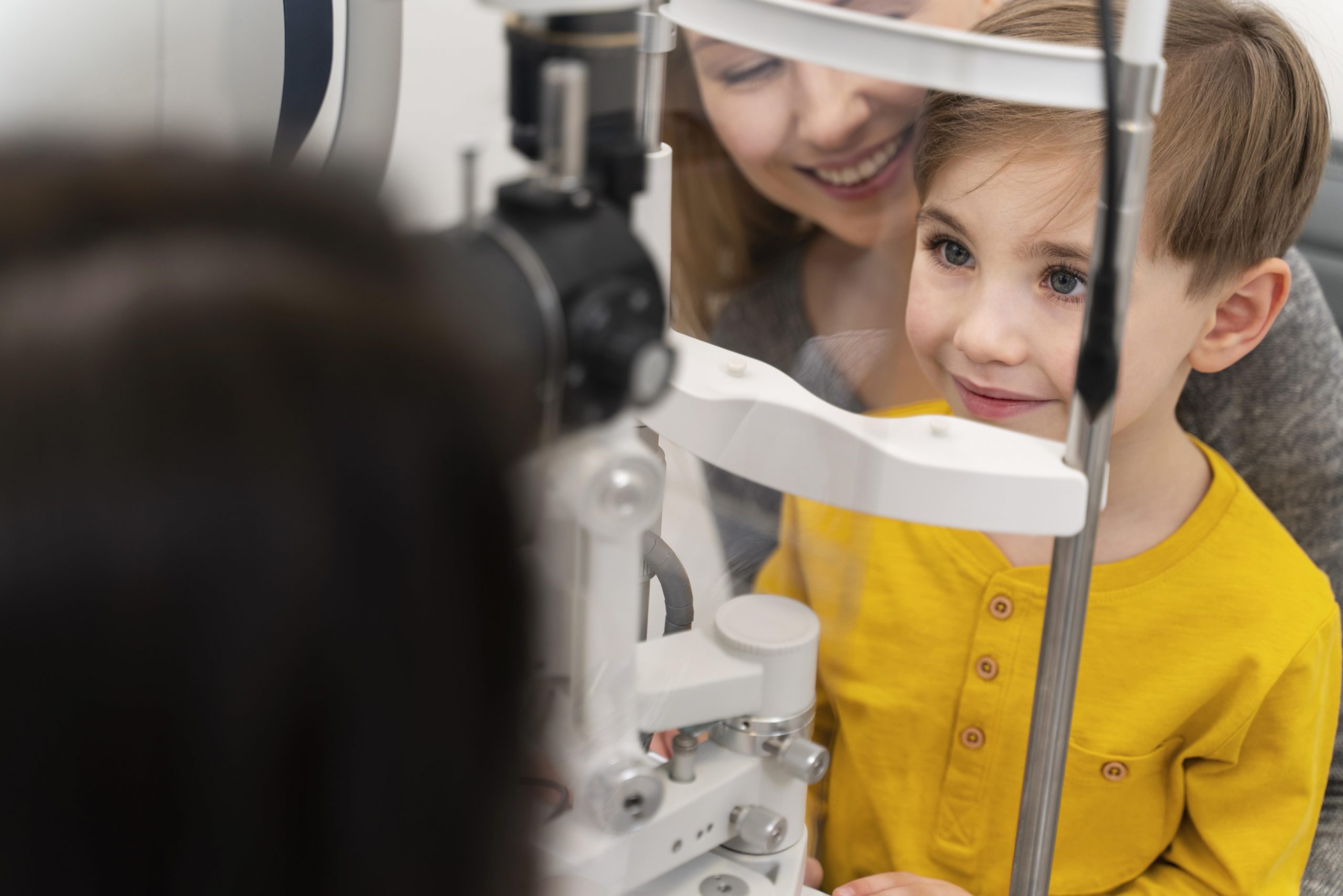

According to a new survey, less than one-third of children had their vision examined in the previous year at their normal primary care facility. According to the study, rates of eye care screening in children vary greatly by insurance status, with the lowest rates among uninsured children (18%) and those with “safety net” public insurance for low-income households (28%).
As per a study published in JAMA Ophthalmology by a team from the University of Michigan and Duke University, even children with private insurance, such as from a parent’s job, had only slightly higher rates of screening, at 34% in the previous year.
Reports show that, screening rates are highest, although still low, among children aged 3 to 5. Because of the importance of detecting and treating amblyopia, or “lazy eye,” they are among the age groups covered by a nationwide universal vision screening guideline.
Survey found that even among children in this age group who had private insurance, only over 41% had their eyesight examined at their usual primary care clinic or pediatrician’s office in the previous year. This compares to approximately 35% of people with government insurance and 30% of those without insurance.
Screening rates in elementary school-aged children were five percentage points lower than rates in preschoolers overall. In addition, just 25% of privately insured middle- and high-school-aged students, 20% of their publicly covered friends, and 17% of their uninsured classmates recently had their vision checked by their regular health clinic.
The study examined data from the National Survey of Children’s Health, which conducted nationally representative surveys of parents from 2018 to 2020.
Parents were asked if their children had their vision tested for letters, images, or shapes on a standard eye chart in the previous year at their pediatrician’s or regular doctor’s office.
“Well-child visits, and other annual checkups such as school or camp physicals, are critical opportunities for catching eye-related issues in children that can have lasting consequences for their education and lives, and these data clearly show room for improvement,” says Olivia Killeen, M.D., M.S., who conducted the study while a National Clinician Scholar at the University of Michigan Institute for Healthcare Policy and Innovation and Kellogg Eye Center. Killeen is presently a pediatric ophthalmology clinical fellow at Duke Health.
Underlying the gap by insurance status is a disparity in preventive and early detection primary care visits. Only 46% of uninsured children had visited their regular provider for preventative health care in the previous year, compared to 81% of privately insured children and 73% of publicly insured children.
Children with special health care requirements have very low rates of eye screening, even though they may be eligible for full or partial health insurance coverage under the Children’s Health Insurance Program or CHIP even if their parents or guardians earn too much money to qualify for Medicaid. In the previous year, only 28% of those with public insurance, 19% of those with private insurance, and 12% of those without insurance had their vision examined.
more recommended stories
 Fat-Regulating Enzyme Offers New Target for Obesity
Fat-Regulating Enzyme Offers New Target for ObesityKey Highlights (Quick Summary) Researchers identified.
 Gestational Diabetes Risk Identified by Blood Metabolites
Gestational Diabetes Risk Identified by Blood MetabolitesKey Takeaways (Quick Summary for Clinicians).
 Pelvic Floor Disorders: Treatable Yet Often Ignored
Pelvic Floor Disorders: Treatable Yet Often IgnoredKey Takeaways (Quick Summary) Pelvic floor.
 Circadian Control of Neutrophils in Myocardial Infarction
Circadian Control of Neutrophils in Myocardial InfarctionKey Takeaways for HCPs Neutrophil activity.
 E-Cigarette Use and Heart Attack Risk in Former Smokers
E-Cigarette Use and Heart Attack Risk in Former SmokersKey Takeaways for Clinicians and Nurses.
 Ultramarathon Physiology: What HCPs Should Know?
Ultramarathon Physiology: What HCPs Should Know?Ultramarathon Metabolism: What Happens to the.
 High-Intensity Training and Oxidative Stress Insights
High-Intensity Training and Oxidative Stress InsightsNew Evidence Linking High-Intensity Training and.
 Sterilized Fermented Beverage for Obesity: New Evidence
Sterilized Fermented Beverage for Obesity: New EvidenceEarly Insights Into a Sterilized Fermented.
 Cardiovascular Risk and Sudden Cardiac Death in Diabetes
Cardiovascular Risk and Sudden Cardiac Death in DiabetesRising Sudden Cardiac Death (SCD) Risk.
 Perinatal Mental Health Challenges Highlighted in New Study
Perinatal Mental Health Challenges Highlighted in New StudyMental Health Challenges in New Parents:.

Leave a Comment